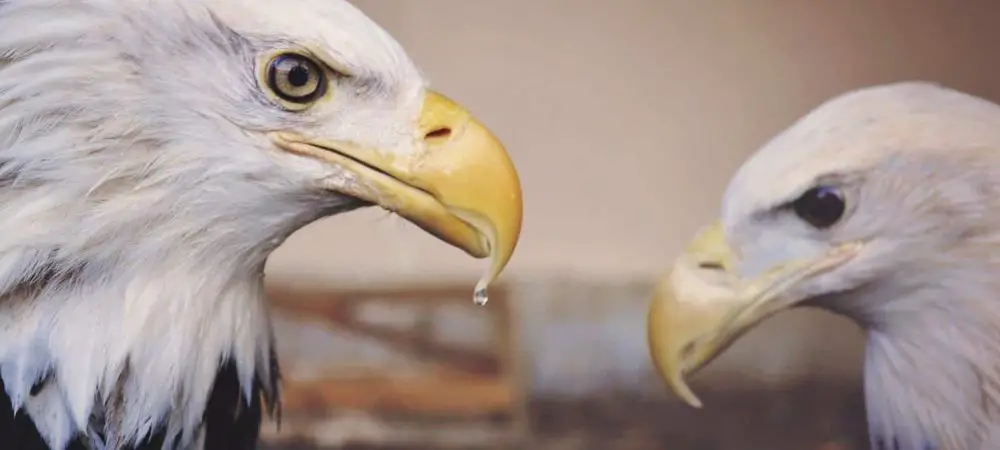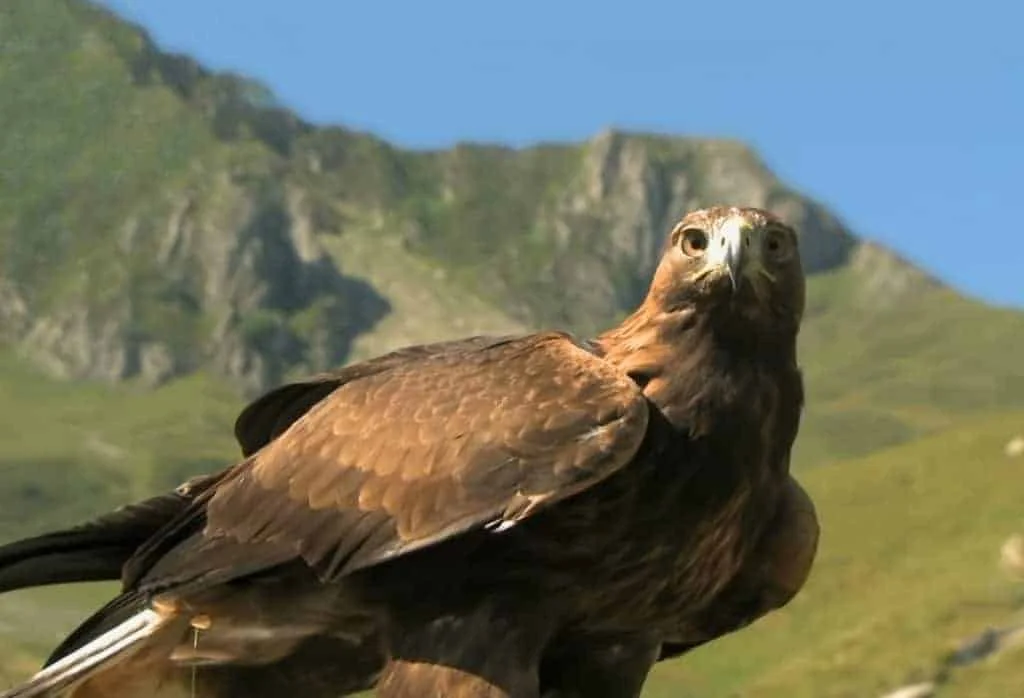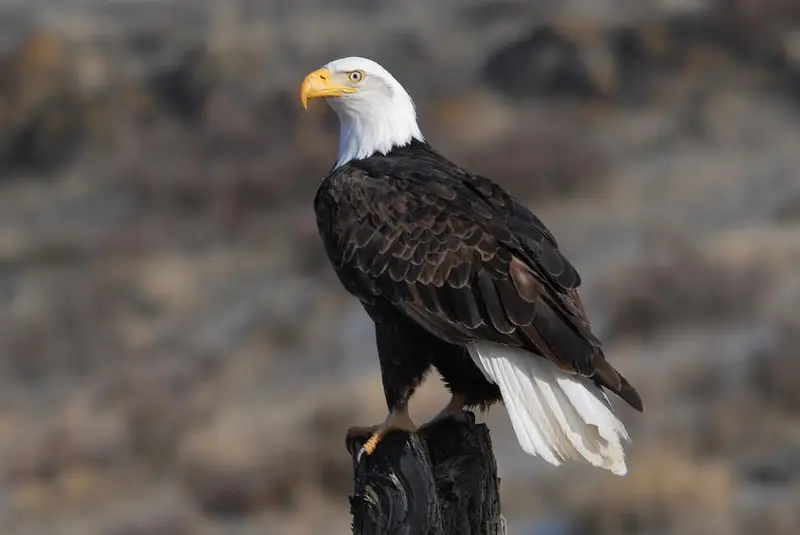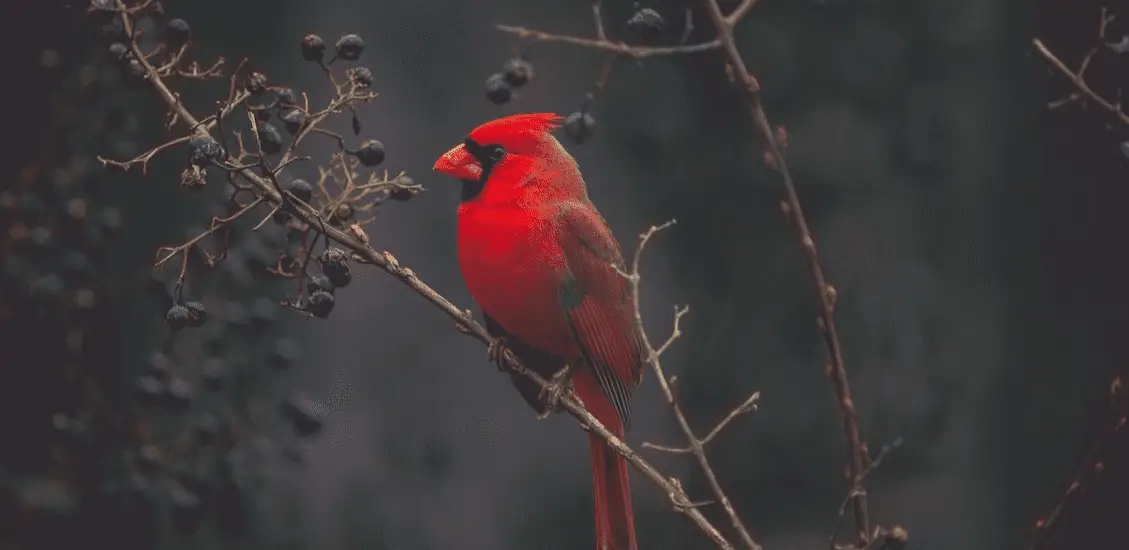
In Arizona, there are two different species of eagles that can be seen.
Table of Contents
ToggleThese are the:
- Golden Eagle
- Bald Eagle
Want to learn more? This book on the Birds of Prey of North America is a fantastic read!
The Copper State has one of the warmest climates in the US, and plenty of uninterrupted natural land for birds like eagles to hunt.
In fact, Arizona has the most bird species of any U.S. state with 551.
This probably means that the land isn’t as much desert as a non-resident might think.
Indeed, there are a number of riparian lowlands and green forests that break the dryness of treeless desert, mainly due to the state’s abundance of rivers.
Want to attract birds of prey to your yard? Take a look at our article!
What Eagles can be seen in Arizona?
Table of Contents
1. Golden Eagle

Wingspan
2m
Weight
3-6kg
Life Expectancy
Up to 38 years
Diet
Small - medium mammals
Named for the golden-yellow feathers that rest on the crown and back of an otherwise dark-feathered body, golden eagles are better known as ‘The King of Birds’.
Beyond the dark browns with gold highlights, these eagles usually have light feathers on the wing tips, tail, and face.
One look at its seven-foot wingspan in flight will explain the grandiose title, and even bald eagles must bow to the sheer size of the largest bird-of-prey in North America.
These are consummate hunters, capable of taking down deer, foxes, and wolves, and anything smaller, but also of snatching other birds-of-prey from flight.
In Arizona, golden eagles like to gather near open areas with plenty of natural vegetation to fatten their meals.
Places near mountains and high outcroppings are ideal, as they like to build nests in remote and sturdy places where they can scan the distance for threats and food.
This does not exclude man-made structures like untended watchtowers and windmills, so long as their perch remains undisturbed.
Places like the North Rim in Grand Canyon National park are good for spotting golden eagles, as it has all the natural prerequisites for long stays.
2. Bald Eagle

Wingspan
204cm
Weight
3-6kg
Life Expectancy
Up to 20 years
Diet
Mostly fish, some small birds and reptiles
These are perhaps the most recognizable birds in the U.S. Their white crowns, dark brown bodies, and yellow beaks and talons have been a symbol of America for centuries.
Bald eagles are well-adapted to the warmth of Arizona, and its proximity to the Mexican border if it needs to avoid the cold. Bald eagles like mountain nests like golden eagles for the same reason, but they are more likely to build at the top of high trees.
Their unmistakable nests are as large as any flying bird, often several times larger than the eagle itself.
These raptors often overwinter in the relatively temperate cold seasons of Arizona, tightening their nests for new birds in the spring, when they begin their most active seasons in terms of daily movement.
Look for bald eagles near bodies of water like rivers, lakes, ponds, and streams, which attract their favorite prey, specifically in mountainous areas that are ideal for their lookouts.
They are not particular about the trees they use, but Arizona’s cottonwoods and pines are usually a good place to start.
The scarcity of eagles in the state has more to do with their scarcity anywhere in North America. Fortunately, local and federal efforts to protect eagles–bald eagles in particular–have led to a public agreement that these birds should be preserved.
This has led to a stabilization of both populations, and a hopeful outlook for birdwatchers wanting to spot eagles in the future.

More Articles.

If you’re thinking about taking your child birdwatching, the most important thing is having equipment

Birds are known to come in many different colors. Even birds of a similar species

What does it mean when you see a Cardinal?
There are some truly amazing things that the cardinal can represent in your life, whether

About Us
We are avid bird-watchers who recently retired, allowing us more time to travel the world. Fortunately, we have managed to visit numerous countries around Europe, Asia, and America. Watching and photographing birds has been a passion for many years and we are making the most of the extra time on our hands!

